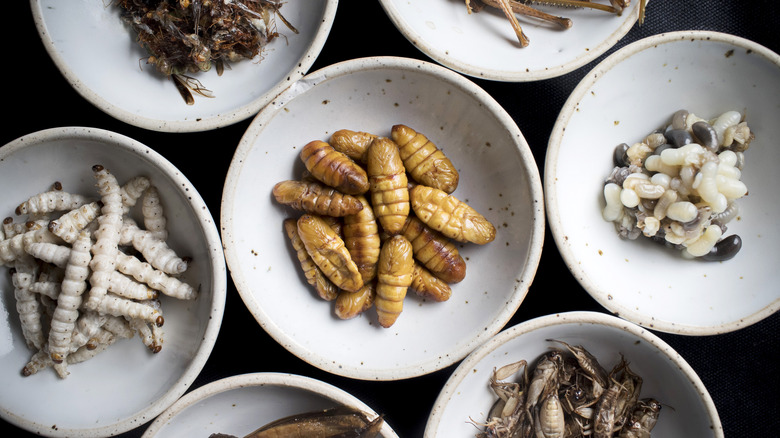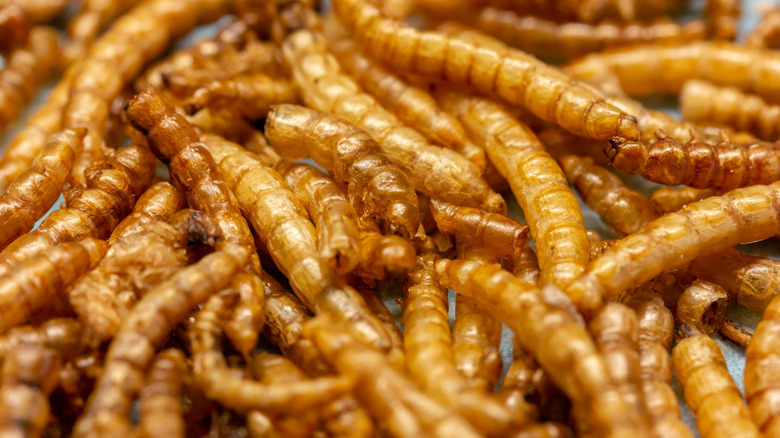Beetle Larvae Can Actually Be Turned Into Human Food
The very thought of it might turn most American stomachs, but eating insects is a common cultural practice in a number of places worldwide including Asia, Africa, and Latin America. They provide a good alternative protein source to meat and offer excellent nutritional value (per Food Science of Animal Resources). Even the ancient Romans and Greeks feasted on bugs every now and then, noshing on a little beetle larvae with their wine (via National Geographic).
And as the global population increases and the amount of arable land shrinks due to climate change, the world will need to find ways to rise and meet the daunting challenge of food insecurity. That effort will require producing food that is environmentally sustainable, and raising insects is far better for the planet than cows in terms of energy efficiency and greenhouse gas emissions (per Journal of Future Foods).
One possible option to address the situation could involve beetle larvae. There are more than 350,000 known species of beetle, and researchers have learned that larvae of one beetle can actually be turned into human food.
Beetle larvae: It's what's for dinner?
The discovery, published in the Journal of Insects as Food and Feed, found that the larval stage of a certain species of darkling beetle, also known as a "yellow mealworm," had the potential to serve as an alternative protein source to meat. That may not resonate with people living in various parts of the Western world who view insects as disgusting and didn't grow up eating beetles and crickets as part of their regular diet.
But there are plenty of reasons to consider incorporating mealworms into a future meal plan. They are rich in vitamins and amino acids and deliver a wide range of health benefits — including lowering cholesterol and reducing inflammation — and are a heart-healthy food (via StudyFinds). Edible insects have also been promoted by the Food and Agriculture Organization of the United Nations, which touts their significantly lower carbon footprint as compared to raising other livestock.
Depending on how it is prepared and what you mix it with, study researchers found that mealworms can taste like meat, sweetcorn, or shrimp (per Mother Jones). However, eating entails the senses, and even if beetle larvae's flavor resembled filet mignon, the unsightly visual of mealworms isn't going to help recruit the uninitiated. This is why some think it might take products such as beetle burgers or mealworm nuggets to gradually acclimate our palates to the unfamiliar experience of dining on insect-based protein (via Foodbeast). Why not? It worked for plants.

